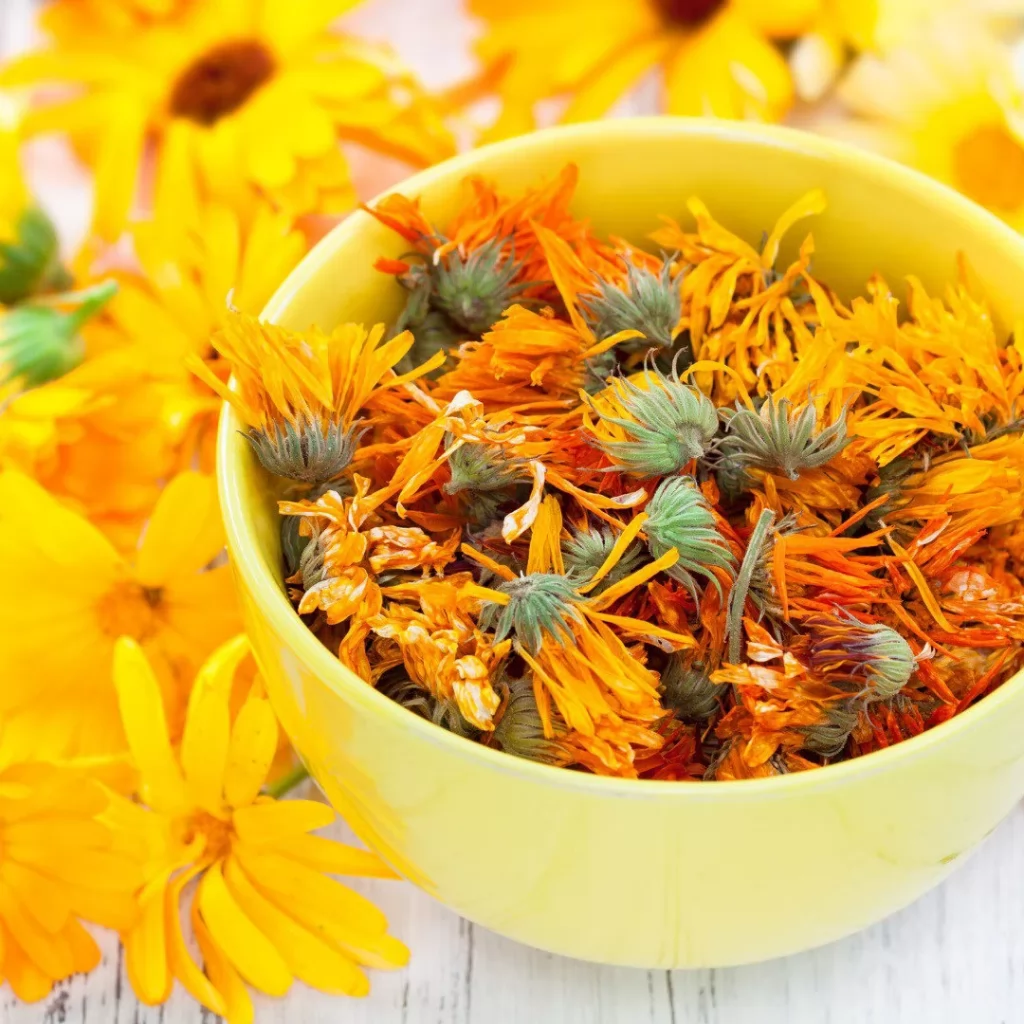Introduction:

Calendula, a vibrant and versatile medicinal herb, has been gaining popularity in Egypt due to its myriad of health benefits and ornamental qualities. Cultivating calendula in the rich soils of Egypt can be a rewarding endeavor, offering opportunities for both small-scale farmers and commercial producers. In this article, we will explore the key aspects of cultivating calendula in Egypt, from suitable growing conditions to potential economic benefits.
Growing Conditions:
- Climate and Temperature: Calendula thrives in a temperate climate, making Egypt’s mild winters and warm summers ideal for its cultivation. The plant prefers temperatures between 50°F (10°C) and 75°F (24°C), making it well-suited for various regions across the country.
- Soil Requirements: Calendula is not particularly demanding when it comes to soil. However, well-draining soil with a slightly acidic to neutral pH is preferable. Adding organic matter to the soil can enhance its fertility and water retention capabilities.
- Sunlight: Calendula is a sun-loving plant that requires full sunlight for at least six hours a day. Ensuring that the cultivation site receives ample sunlight will promote robust growth and vibrant flower production.

Cultivation Practices:
- Propagation: Calendula can be propagated from seeds, which are easy to collect and sow. Direct seeding in the garden or starting seeds indoors in trays are both viable methods. The seeds should be planted in well-prepared soil with a spacing of about 12-18 inches between plants.
- Watering: While calendula is relatively drought-tolerant, regular watering is essential, especially during dry periods. Watering should be done at the base of the plant to avoid wetting the foliage, reducing the risk of diseases.
- Fertilization: Calendula generally doesn’t require heavy fertilization. However, incorporating a balanced, all-purpose fertilizer during the growing season can promote healthier plants and more abundant blooms.
- Pest and Disease Management: Calendula is resistant to most pests and diseases, but keeping an eye out for aphids and caterpillars is advisable. Organic pest control methods, such as neem oil or companion planting with pest-repelling plants, can help maintain a healthy crop.
Economic Opportunities:
- Medicinal Uses: Calendula has a long history of medicinal use, and its extracts are valued for their anti-inflammatory and skin-healing properties. The demand for natural remedies and skincare products provides an opportunity for farmers to tap into the herbal medicine and cosmetic industries.
- Floral Industry: The vibrant, daisy-like flowers of calendula make it an attractive option for the floral industry. Harvested flowers can be sold fresh or dried for use in arrangements, bouquets, and various decorative purposes.
- Value-Added Products: Entrepreneurs can explore the production of value-added products such as calendula-infused oils, creams, and teas. These products cater to the growing market for natural and organic alternatives.
Conclusion:
Cultivating calendula in Egypt presents a promising venture for farmers and entrepreneurs alike. With its adaptability to local growing conditions and the increasing demand for natural products, calendula cultivation can not only contribute to the economic growth of the region but also promote sustainable and health-conscious practices within the agricultural sector. As interest in herbal medicine and natural remedies continues to rise, the cultivation of calendula stands as a blooming opportunity in the Egyptian agricultural landscape.
